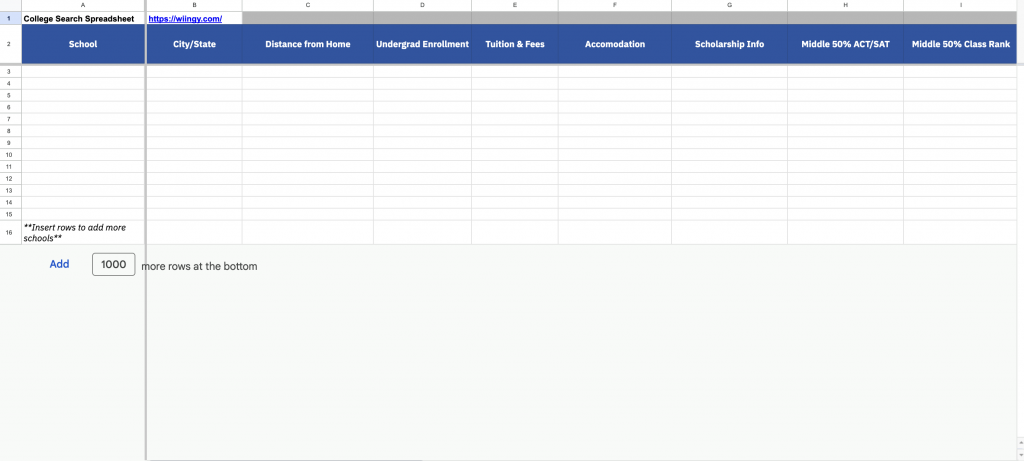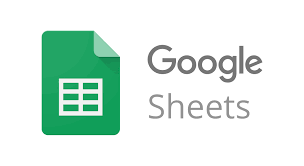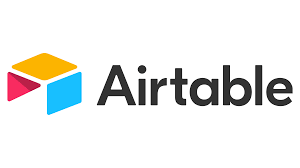In this article
 What is a College Spreadsheet?
What is a College Spreadsheet? What’s the purpose of a College Spreadsheet?
What’s the purpose of a College Spreadsheet? Download college planning spreadsheet template
Download college planning spreadsheet template What do you need to make an effective college list spreadsheet?
What do you need to make an effective college list spreadsheet? Things to add to a college application spreadsheet
Things to add to a college application spreadsheet How to find the data for the college application spreadsheet checklist?
How to find the data for the college application spreadsheet checklist? Conclusion
Conclusion Frequently Asked Questions (FAQs)
Frequently Asked Questions (FAQs)
As a high school student, it is incredibly confusing to start planning for college. It’s like trying to find your way through a busy place where every sign points in a different direction. You have so many things to remember: classes to take, co-curricular, social activities, exams, and deadlines. And it all seems to jumble up.
You might have written down your dream colleges and important dates, but it still feels messy. The same applies to your friends as they try to figure out life after school. You need something to make all this easier. But what can help?
A college spreadsheet might be just what you need.
It is like a map for all your college planning. An effective college spreadsheet can simplify the process of creating a college list.
Create a college spreadsheet. It will help you stay organized, make informed decisions, and feel more confident in your college search.
What is a College Spreadsheet?
A college spreadsheet is a digital document that helps you organize information about colleges you are considering. It can be used to track factors such as location, cost, size, majors offered, and admissions requirements.
If you are beginning to search for colleges, a spreadsheet can be useful. It helps you stay organized and make informed decisions.
What’s the purpose of a College Spreadsheet?
Organizing a list of colleges can seem daunting — and in reality, it often is. Students receive a lot of information in their mailboxes and inboxes, and it can be difficult to keep track of it all. As a solution, many students and parents make college search spreadsheets listing colleges and what they offer.
To get started, you’ll need to answer a few questions, such as:
- How should I make a spreadsheet?
- What should be on the spreadsheet?
- What information is most useful?
- Who else will see this spreadsheet?
- Where can I find data and other information for the sheet?
Download college planning spreadsheet template
We have made a college planning spreadsheet template to make it easy for you.
There are many different college spreadsheet templates available online, so you can find one that fits your needs.
Download the college planning spreadsheet.

What do you need to make an effective college list spreadsheet?
Making a college list spreadsheet is all about organizing and evaluating the factors that will shape your college application journey.
So, when it comes to making a college list spreadsheet, you’ve got to focus on the following three important things:
Choosing the right platform
Choosing the right platform is like picking the perfect tool to make your college planning a breeze.
We want to make sure you’ve got the best tool in your hands to keep everything organized and hassle-free.
So, to create an effective college list spreadsheet, you can either create it by yourself from scratch or you can take help from existing college spreadsheet software built for this purpose.
Building a college list spreadsheet from scratch
Building a college list spreadsheet from scratch gives you complete control over your data and customization options.
It will also allow you to create a personalized tool that perfectly fits your needs.
You can create your college list spreadsheet from scratch by using:
Google Sheets

| Pros | Cons |
| Free to use | Limited offline access |
| Accessible from any device with internet access | May have performance issues with large datasets |
| Easy to collaborate with othersIntegrates well with other Google services (e.g., Google Drive, Google Docs) |
Microsoft Excel

| Pros | Cons |
| Suitable for complex calculations and data analysis | Expensive for the full version (Microsoft Office suite) |
| Offers extensive formatting and customization options | Requires installation on a specific device |
| Supports macros and VBA programming | Limited collaboration features |
| Allows offline access | Compatibility issues between different versions |
Airtable

| Pros | Cons |
| Combines the functionalities of a spreadsheet and a database | The free version has limited features and storage capacity |
| User-friendly interface with drag-and-drop features | Advanced features require a paid subscription |
| Allows easy organization and linking of data | |
| Offers flexible views (grid, calendar, Kanban) |
Zoho Sheets

| Pros | Cons |
| Allows for real-time collaboration | Limited offline access |
| Zoho Sheets integrates seamlessly with other Zoho applications | Compatibility issues arise when sharing or collaborating on spreadsheets with users who primarily use different spreadsheet software |
| Zoho Sheets offers affordable pricing plans | Compatibility issues arise when sharing or collaborating on spreadsheets with users who primarily use different spreadsheet software |
| Zoho Sheets is available on various platforms and devices, including Windows, Mac, and mobile devices, providing flexibility in accessing and editing your spreadsheets. |
Use college marketing materials to get the information
In addition to using spreadsheet platforms or college list software, it is helpful to gather and incorporate college marketing materials like brochures into your spreadsheet.
Use these materials to get important information and make better choices as you create your list of colleges.
Here are some tips for utilizing brochures effectively:
- Include key information: Review the brochures carefully and extract relevant details such as admission requirements, academic programs, majors and minors offered, campus facilities, student organizations, and campus culture.
- Create a dedicated column: Make a separate column in your spreadsheet for important details from each brochure. This will help you compare and evaluate colleges more easily.
- Visual reference: If the brochures have campus maps, photos, or other visuals, consider adding a link or image to your spreadsheet. This will help you see the visuals when you review your list.
- Take notes: As you go through the brochures, jot down any specific observations or thoughts that come to mind. These notes can be valuable later when making final decisions or during the application process.
Always remember to keep your college list spreadsheet regularly updated as you gather more information, visit campuses, and refine your preferences.
Spreadsheet software to building a college list
By utilizing specialized college spreadsheet software designed specifically for college planning, you can streamline the process, track application deadlines, and even get personalized recommendations.
Some software is totally free, some are paid, and some software is specific to certain colleges/institutions.
This makes each software unique from one another.
Here’s a list of some potential college search tools that you can use to build your college list spreadsheet:
Spreadsheet.com: You can use a free college application worksheet template to keep track of your college applications. The spreadsheet is split into two main worksheets. One is for decision-making, called “Colleges.” The other is for keeping track of applications, called “Applications.”.
Road2College’s College Insights Tool: It is an app that’s like a college spreadsheet already built for students.
CollegeXpress: It offers a free college search spreadsheet template that helps students keep track of all their college info and compare it easily.
Some other software are:
Things to add to a college application spreadsheet
Now, let’s talk about the essential columns you should add to your college list spreadsheet.
You can use these columns to collect and arrange important information about each college. This includes details like admission requirements, deadlines, majors, and more.
Ready to create a comprehensive spreadsheet that covers all the key details? Let’s get started!
General information section
This section of your college list spreadsheet is the section where you’ll gather crucial details about each college.
This section includes information about the following:
- Name of the college
- Location of the college (State, city)
- Ranking of the college
- Location setting
- Institution type, like if it’s a liberal art or a research institute
- Campus size
- Average class size
Academic section
This section will help you to prioritize your academic interests and explore potential majors. It will allow you to highlight any specific academic areas you are passionate about and will give information about the professors.
Given below are the points to be included:
- Intended Majors
- Student-to-faculty ratio
- Average class size
- Graduation rate
In the Academic section of your college application, you’ll be able to focus on what you’re interested in studying and explore different majors.
You can share your passion for specific subjects and learn about the professors at the school.
As you assess your academic interests and preparedness, consider utilizing online resources to strengthen your foundation in key subjects. Whether you’re in college, returning to studies as an adult, or preparing for competitive exams, math challenges can vary widely. On Wiingy, students can find online math classes designed to offer personalized guidance in topics like statistics tutoring online, advanced algebra lessons online, or pre-calculus tutoring online.
For those tackling complex subjects like calculus 2 online classes or refreshing their understanding with geometry lessons online, there are expert tutors available across different time zones and budgets. Wiingy makes it easy for learners to find tutors online who fit their unique learning needs whether it’s building confidence, revising concepts, or preparing for exams.
It’s a chance to find out about the student-to-faculty ratio and class sizes, which will give you an idea of how much personal attention you can expect.
You’ll also discover the graduation rate, which shows how well the school supports students in finishing their degrees.
Overall,this section will help you express your academic goals. It will also help you get to know professors. Additionally, it will help you consider important factors for a rewarding college experience.
Outcome section
In the Outcome section, you can learn about what your future will be like after you graduate. This includes how much money you can expect to make, how much debt you might have, and the rate at which students graduate.
This section will give you a clear picture of the potential financial outcomes and success rates you can anticipate as you complete your education and embark on your career journey.
This will include
- Average salary after graduation
- Average debt after graduation (learn more on Student Loan Debt 2025 | Impact of change in federal interest rates)
- Graduation rate
Admission section
This section is where you’ll dig into the admission requirements of each college.
Given below are the points to be included
- Average ATC/SAT scores
- Average GPA of accepted students
- Acceptance rate
- Application deadline
- Application fees
- Accepts common app
Cost and financial aid section
In this section, you will find important information about college finances, such as
- Total cost which must include your tuition, room and board, supplies, and additional fees
- Net cost of attendance according to your income
- Percentage of financial needs met
- Percentage of students receiving financial aid
- Average financial aid offered
- Average debt after graduation
Putting this information in one place makes it easy to see the financial impacts and opportunities of each college.
This section helps you find colleges that fit your budget. It ensures that you choose affordable colleges or explore financial aid options.
You can make informed decisions about college affordability with a Financial Information Section.
You can evaluate the cost of attending each institution by comparing the tuition, fees, and related expenses.
NOTE: If you want financial aid, check if the colleges you’re applying to are need-blind. Otherwise, they’ll consider your ability to pay when deciding if you can get in.Campus life section
Knowing the college housing options is necessary. It will provide valuable information about housing availability, the percentage of students living on campus, and the sports and activities options that will be available, giving you a glimpse into the vibrant and engaging student life that awaits you on campus.
- Housing Availability in College
- Percentage of students living on campus
- Sports available
- Activities Available
Personal preferences section
This is the section where you can capture and compare the aspects of each college that align with your personal preferences, such as
- Campus feel. You can add the initial feelings that you get when you first visit the college.
- Religious Affiliation. You can add if you would like to join colleges of a particular religious affiliation.
This section allows you to evaluate and compare colleges based on your personal interests and preferences, helping you identify institutions where you can thrive both academically and socially.
By considering these factors, you’ll be able to identify colleges that not only meet your academic needs but also provide an environment that resonates with your individual interests and preferences.
How to find the data for the college application spreadsheet checklist?
Choosing what information to include in your college application spreadsheet is easy. But collecting that data can be a challenge. After all, you need accurate and up-to-date information to make the best decision for your future.
Here are ways to find data for your college application spreadsheet:
- Google: This is the simplest method, but it can be time-consuming and inefficient. You’ll need to search for each piece of data individually, and the information may not be easy to find.
- IPEDS: The Integrated Postsecondary Education Data System (IPEDS) is a website managed by the National Center for Education Statistics. It provides a variety of data on colleges and universities, including acceptance rates, tuition costs, and student demographics.
- Common Data Set (CDS): The Common Data Set is a database of information that colleges and universities voluntarily submit. It includes information on a wide range of topics, such as academic programs, financial aid, and student life.
- Reddit: Reddit is a social media platform where users can ask questions and get answers from other users. There are many subreddits such as r/ApplyingToCollege, dedicated to college admissions, where you can find information about specific colleges, ask questions about the application process, and get advice from other students.
The best way to find data for your college application spreadsheet depends on your needs and preferences. If you’re looking for a quick and easy way to get a few pieces of information, Google may be the best option. But if you need comprehensive and up-to-date data, IPEDS or the CDS are better choices. If you’re looking for personal experiences and insights from other students, Reddit can be a valuable resource.
Conclusion
Crafting a useful college spreadsheet is a smart approach to exploring the complexities of the college search and application process.
“Planning for college also has to be grounded in practicality. Considering each college on my list and its associated costs.”
-Carlos Alonso Ramirez, College Student, San Diego
By selecting the right platform, including essential sections such as general information, academics, financial info, and personal preferences, and utilizing reliable sources to gather information, you can create a comprehensive and well-organized tool.
A college spreadsheet has many benefits. It helps you stay organized, compare options, keep track of important dates, and personalize your search. With it, you can make informed decisions and find the right college that fits your goals and dreams.
Take advantage of the power of a college spreadsheet to streamline your journey and embark on an exciting path toward higher education success.
Frequently Asked Questions (FAQs)
How do you make a college spreadsheet?
To create a college spreadsheet, follow these steps:
1. Open a spreadsheet program like Microsoft Excel or Google Sheets.
2. Create column headers for the information you want to include, such as “College Name,” “Location,” “Tuition,” “Application Deadline,” and so on.
3. Enter the relevant data for each college in the corresponding rows and columns. Fill in the details for each category.
4. Use additional columns for any additional details you want to include, such as admission requirements, majors offered, campus facilities, or any other factors that are relevant to your college search.
5. Consider using conditional formatting to highlight specific data points or criteria that are important to you.
6. Use filters or sorting options to organize and manipulate the data, making it easier to compare colleges based on various criteria.
7. Regularly update the spreadsheet as you gather new information or make decisions regarding colleges.
What should be included in a college decision spreadsheet?
A college decision spreadsheet should include the following information:
1. College Name: The name of each college you are considering.
2. Location: The city and state where the college is located.
3. Tuition Fee: The cost of tuition for each college.
4. Financial Aid: Any scholarships, grants, or financial aid opportunities offered by the college.
5. Admission Requirements: The academic and standardized test score requirements for admission.
6. Application Deadline: The deadline for submitting your application.
7. Majors and Programs: The majors and academic programs offered by the college.
8. Campus Facilities: Information about the campus facilities, such as libraries, laboratories, sports facilities, and housing options.
9. Student-Faculty Ratio: The ratio of students to faculty members, which can indicate the level of individual attention you might receive.
10. Graduation Rate: The percentage of students who graduate from the college within a specified time frame.
11. Campus Culture: Details about the social and cultural aspects of the college, such as clubs, organizations, and extracurricular activities.
What are the categories of college spreadsheets?
The categories of a college spreadsheet typically include:
1. Basic Information Section: This category includes columns for the college name, location, size of the student body, institution type, campus size, average class size, sports division, availability of dorms, and guaranteed housing.
2. Academic Section: This category includes columns for the intended major, student-to-faculty ratio, average class size, and graduation rate.
3. Outcome Section: This category includes columns for average salary after graduation, average debt after graduation, and graduation rate.
4. Admission Section: This category includes columns for the average ACT/SAT scores, average GPA of accepted students, acceptance rate, application deadline, application fees, and accepts common app.
5. Cost and Financial Aid Section: This category includes columns for the total cost which must include your tuition, room and board, supplies, and additional fees, the net cost of attendance according to your income, the percentage of financial needs met, the percentage of students receiving financial aid, the average financial aid offered, and the average debt after graduation.
6. Campus Life Section: This category includes columns for housing availability in college, the percentage of students living on campus, sports available, and the activities available.
7. Personal Preference Section: This category includes columns for the campus feel, the major location of the college, and the location setting.
What is the easiest way to make a spreadsheet?
The easiest way to make a spreadsheet is by using spreadsheet software such as Microsoft Excel or Google Sheets.
1. Open the spreadsheet program of your choice.
2. Create column headers by typing the titles of your data categories in the first row.
3. Enter data into the cells below each column header.
4. Customize the formatting of your spreadsheet, such as adjusting column widths, applying cell formatting, or adding colors.
5. Save your spreadsheet regularly to ensure you don’t lose any changes.
What are three 3 tasks that a college spreadsheet may be used for?
A college spreadsheet can be used for the following tasks:
1. College Comparison: A spreadsheet can be used to compare different colleges by creating columns for factors such as location, tuition costs, admission requirements, majors offered, campus facilities, and more.
2. Application Management: A spreadsheet can help students keep track of their college applications by including columns for application deadlines, required documents, submission status, and any other relevant information.
3. Financial Planning: Spreadsheets are valuable tools for financial planning related to college. Students can create a budget by including columns for tuition costs, financial aid, scholarships, living expenses, and other expenses.
Apr 15, 2025
Was this helpful?





